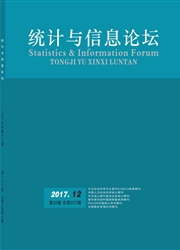

 中文摘要:
中文摘要:
通过对农村金融调研数据的描述统计和Heckman两阶段模型分析,研究表明:在农村,非正规金融多为零星、小额信贷;户主文化程度、家庭收入水平和金融环境对正规金融的选择影响为正,对非正规金融的选择影响为负,资产价值高的农户发生借贷的可能性较小;无论是正规金融还是非正规金融,年龄对借贷需求均有显著的正向影响,而劳动力人数则是负向影响,农业收入为主的农户对非正规金融需求较多,以生活为目的的借款对正规金融的借贷需求较少。
 英文摘要:
英文摘要:
Formal and informal finance coexist in rural financial system, that is financial dualism. Based on the survey data, descriptive statistics analysis and Heckman two-stage model are carried. The study concludes that the majority of informal finance is unsecured, small loans. Education, income and finance environment have positive impact on choice of formal finance, while negative impact on choice of informal finance. Households with high asset value are less likely to borrow. Age has positive impact, while labor number has negative impact on credit demand for both formal and informal finance. Households mainly depending on agricultural income demand more for informal finance. Rural households with loans for living demand less for formal finance. The above conclusion has guiding significance to promoting rural financial reform in our country.
 同期刊论文项目
同期刊论文项目
 同项目期刊论文
同项目期刊论文
 期刊信息
期刊信息
